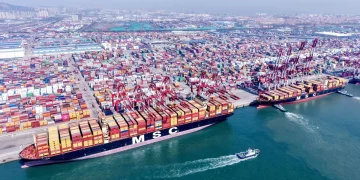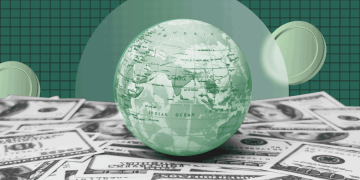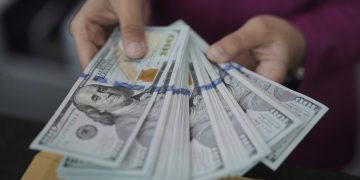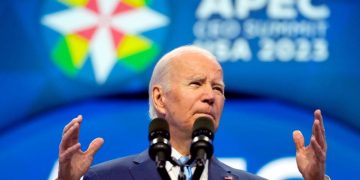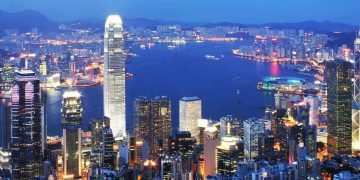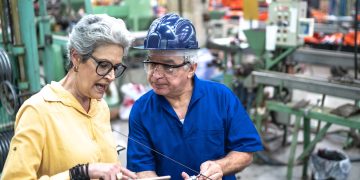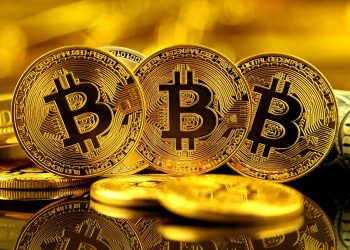Inflation has been a central concern for the United States for the past several years, especially after the economic shocks caused by the COVID-19 pandemic, the resulting fiscal stimulus measures, and the global supply chain disruptions. While inflation surged to its highest levels in decades in 2021 and 2022, the question on everyone’s mind now is whether these inflationary pressures will persist or whether the U.S. economy will return to a more stable, sustainable growth trajectory in the coming years.
As the Federal Reserve continues its efforts to manage inflation through interest rate hikes and quantitative tightening, many are left wondering how long these pressures will last and what the future economic outlook will look like. Will inflation remain elevated? What are the potential risks to long-term economic stability, and how might the U.S. economy adapt to an increasingly uncertain global landscape?
In this article, we will examine the factors driving inflation in the U.S., the potential for continued price increases, and the broader economic forces at play. We will also explore how these dynamics could shape the future economic environment, both in the U.S. and globally.
1. The Current State of Inflation in the U.S.
As of the beginning of 2025, the U.S. economy has been experiencing a relatively lower inflation rate than the record highs seen in 2022, but inflation is still above the Federal Reserve’s long-term target of 2%. The Consumer Price Index (CPI), which measures the average change in prices paid by consumers for goods and services, has shown signs of moderating, but it remains elevated in certain sectors such as housing, food, and energy.
Several factors have contributed to this persistent inflationary pressure:
1.1. Supply Chain Disruptions
The COVID-19 pandemic wreaked havoc on global supply chains, causing delays, labor shortages, and price increases in a wide range of goods. Although many of these disruptions have eased, the recovery process has been slow. Even small disruptions in key supply chains can cause significant ripple effects across the economy. Industries such as electronics, automobiles, and construction continue to face supply chain challenges that contribute to higher prices.
1.2. Rising Energy Prices
Energy prices, particularly oil and natural gas, play a significant role in overall inflation. As global demand for energy has rebounded post-pandemic, coupled with geopolitical tensions, energy prices have been volatile. The ongoing war in Ukraine, supply cuts from major oil producers, and extreme weather events have all played a role in keeping energy prices high, which in turn impacts everything from transportation costs to heating bills, further driving inflation.
1.3. Labor Market Tightness
The U.S. labor market has been tight, with unemployment rates at historically low levels. While this is a positive sign for economic recovery, it also contributes to inflationary pressures. Employers are having to offer higher wages to attract and retain workers, particularly in industries that require specialized skills or are experiencing significant labor shortages. These wage increases often get passed on to consumers in the form of higher prices for goods and services.
1.4. Demand-Side Pressures
On the demand side, fiscal stimulus measures and pent-up consumer demand fueled spending, especially in the aftermath of pandemic lockdowns. While the stimulus has waned, consumer spending remains strong, particularly on durable goods, housing, and services. This continued demand, combined with ongoing supply chain constraints, means that price pressures persist in many sectors.
2. The Federal Reserve’s Response: Will Rate Hikes Tame Inflation?
The Federal Reserve, under the leadership of Jerome Powell, has been aggressively raising interest rates since 2022 in an effort to curb inflation. The rationale behind this is straightforward: higher interest rates make borrowing more expensive, which reduces consumer spending and business investment, slowing down the economy and reducing demand. This, in turn, is supposed to help reduce inflationary pressures.
However, the effectiveness of these rate hikes has been a subject of debate. While there are signs that inflation has moderated somewhat, core inflation (which excludes volatile food and energy prices) remains stubbornly high in some sectors, particularly housing and wages.
2.1. Rate Hikes and Economic Growth
The challenge for the Fed is to strike the right balance between combating inflation and not stalling economic growth. In an effort to combat high inflation, the Fed has raised interest rates several times, leading to higher mortgage rates, car loans, and credit card interest rates. While these measures have contributed to cooling the housing market and reducing consumer demand, the full impact of rate hikes may take time to materialize.
Raising rates too aggressively could push the U.S. economy into a recession, as higher borrowing costs could dampen business investment and consumer spending. As such, there is significant debate about whether the Fed can successfully tame inflation without tipping the economy into a downturn. The ongoing uncertainty in global markets and potential geopolitical risks make the Federal Reserve’s path forward especially challenging.
2.2. Inflation Expectations
Another critical factor that influences inflation is inflation expectations. If businesses and consumers expect prices to continue rising, they may take actions that reinforce inflationary pressures, such as increasing wages or raising prices. The Federal Reserve is aware of this, and it aims to anchor inflation expectations through its monetary policy actions. If people believe that the Fed will be able to control inflation and return to a stable economic environment, this could help prevent inflation from becoming entrenched.

3. What Are the Key Risks to the U.S. Economy in the Near Future?
While inflation remains a concern, there are several other risks that could impact the U.S. economy’s trajectory over the next few years. These risks could further influence inflation, economic growth, and employment.
3.1. Geopolitical Uncertainty
Geopolitical tensions, such as the ongoing conflict between Russia and Ukraine, could continue to disrupt global energy markets and supply chains. In particular, disruptions to energy supplies could lead to price spikes and further fuel inflation. Additionally, the potential for increased trade barriers, sanctions, or economic decoupling between major economies (like the U.S. and China) could disrupt global supply chains and lead to higher prices.
3.2. Global Economic Slowdown
The global economy is facing challenges, including slow growth in key markets like China and Europe. If global demand weakens, U.S. exports could be negatively impacted, potentially leading to slower economic growth. Furthermore, weaker global growth could reduce demand for energy, which would relieve some pressure on prices, but could also result in a slowdown in the U.S. economy as a whole.
3.3. Debt Levels and Fiscal Policy
The U.S. federal debt has been growing for years, and questions about fiscal sustainability are becoming more pressing. While high levels of government debt are manageable in a low-interest-rate environment, the rise in rates could increase the cost of servicing debt, leading to potential budgetary pressures. High debt levels could also limit the ability of the government to enact fiscal stimulus or support the economy in the event of a downturn.
3.4. The Impact of Technological Disruption
Technological advancements, especially in automation, artificial intelligence, and energy innovation, could have a significant impact on inflation and the overall economic landscape. Automation, for example, could lead to more efficient production processes, potentially reducing costs in some sectors. However, it could also lead to job displacement, contributing to economic inequality and social challenges.
4. How Will the U.S. Economy Evolve in the Coming Years?
The future economic landscape of the U.S. will likely be shaped by a combination of factors, including inflationary trends, the Federal Reserve’s policy decisions, geopolitical events, and domestic economic challenges.
4.1. Transition to a Post-Pandemic Economy
As the U.S. continues its recovery from the pandemic, the economy is likely to undergo a transition phase. The labor market will adjust to new realities, with remote work, automation, and changing consumer preferences reshaping industries. The housing market may continue to slow down, as high interest rates make homeownership less affordable for many Americans. Meanwhile, the service sector, which took a hit during the pandemic, will likely continue to recover as demand for travel, dining, and entertainment picks up.
4.2. Long-Term Inflationary Trends
While inflation is expected to moderate over time, the U.S. may continue to experience higher-than-average inflation compared to historical norms. Factors such as rising energy prices, labor market tightness, and demographic changes (e.g., an aging population) could contribute to persistent inflationary pressures in the long run.
4.3. A Changing Global Economy
The U.S. will also need to navigate an increasingly multipolar global economy. Competition with China, climate change, and the rise of new technologies will influence global trade, supply chains, and investment flows. As the world becomes more interconnected, the U.S. will need to adapt to changing global dynamics, ensuring its economic policies are flexible and forward-thinking.
5. Conclusion: Inflationary Pressures and the Road Ahead
While the U.S. economy has made significant progress in recovering from the COVID-19 pandemic, inflation remains a key challenge. The actions of the Federal Reserve, global economic conditions, and domestic policies will all play a role in shaping the future economic landscape. Although inflationary pressures are likely to moderate in the short term, the path forward is far from certain.
The next few years will be critical in determining how the U.S. navigates these challenges, with decisions on fiscal policy, labor market dynamics, and international relations playing a major role in shaping economic outcomes. As the world faces an increasingly complex and interconnected future, the U.S. will need to carefully balance inflation management with sustainable economic growth to ensure long-term prosperity.



